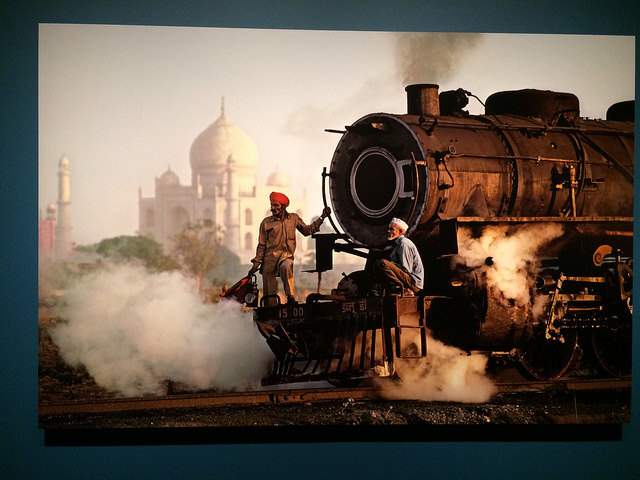The museum itself has a lot well-seen images by Steve McCurry. His pictures are all set up to where you will stand at that one specific picture and while you are to stand at that position, you’ll see that the photos in the past can bring you back in time to where it was taken. There are a large amount of portrait pictures and a few landscape images that’s around 30 different images. The photos in the museum gives the attention to the color and the size in the looks into the various lifestyles of India and northeastern Asian countries such as Tibet and the Himalayan region. The collection of photos were taken in the past around the 1980s through the early 2000s.
The photos showcases a lot of India’s common livelihood and religious life. There are pictures of Mosques, Muslims, the Holi Festival, regular people at work and architecture. We don’t see anything that isn’t related to everyday Indian life to one person to another. There aren’t any pictures of romantic nature, pictures focused solely on monuments or inanimate objects and there isn’t any pictures that are focused on royalty or lavish lifestyles. Steve McCurry’s approach to photographing India is very lively, he isn’t at a distance and shooting with a bigger zoom through the camera’s lens. Even if the he takes pictures with the lens that aren’t interchangeable, his pictures are always close to the subject as the main key to the topic. His portraits also captures the emotion in the subject’s eyes. The photos Steve McCurry took shows the environment around him, taken in a way that uses diagonal angles and different ranges that puts the viewer in his position looking on at the area around him.
The photo that caught my attention is the “Steam Engine of Taj Mahal” photo. I find the photo captivating because it captures the scenery and background to the photo. This photo focuses on many different parts, The Taj Mahal, the villagers on the train and the steam of the train. The villagers on the train are standing at one point of the train as we’ll figure, if they are waiting to see what the holdup was or stopping to see the view that’s coming up next to their expedition. The close up of the picture expresses them as travelers traveling on the train for new journeys and the amazement to their sight. The steam from the train also shows how trains were back in the past before there was technology and live view.
The “Afghan Girl” photo is a striking photo that completely almost looked like another modern portrait of Mona Lisa. The photo has a great method of the position balanced and filling the frame. The lighting of the photo captures the intensity of her green entrancing eyes as the photo focuses on her. The clarity of the picture and the enhanced features of her face also becomes sharp because the whole picture is made up of one of the two complimentary colors— such as redand green. The red is the hijab and her eyes are green eyes as well as the background. The story of the girl— Sharbat Gul— was something to learn about from the past. She was a refugee in a camp in Pakistan during the Soviet War. As she was in her class, Steve McCurry decided to take her picture and thought nothing of it. When he took the photo he believed that this was the picture that would shape his career. This exhibit has shown me different ways that a photographer takes full advantage to the environment as well as the people. It is amazing to see what how pictures can change ones lives in many ways.
• http://ngm.nationalgeographic.com/2002/04/afghan-girl/index-text
The trip to the museum shows a lot on how Steve McCurry focuses on his subjects and how to take the perfect picture. In the present, as we take pictures, it takes timing and concentration as the subject must be focused and the image is in perfect position.





McCurry is primarily interested in people-ordinary people-certainly not the rich and the famous as you observed. the juxtaposition of the Taj Mahal and the steam engine train is quite remarkable. It is a comparison of an idealized view of Indian culture and industrialism. As you note, even at the time that McCurry took this photo this was a very old train and technology.
The photo of the Afghan Girl changed McCurry’s life, making him more famous than he was before. Eventually, when he refound Sharbat Gul years later, and her family received offers of financial help, it helped her too.